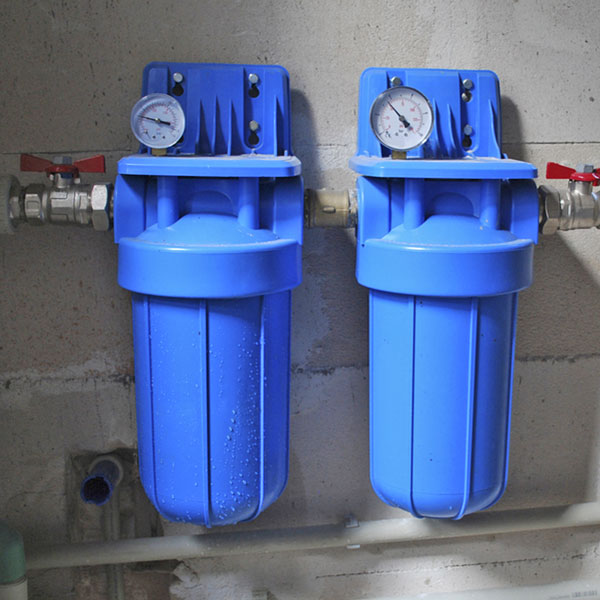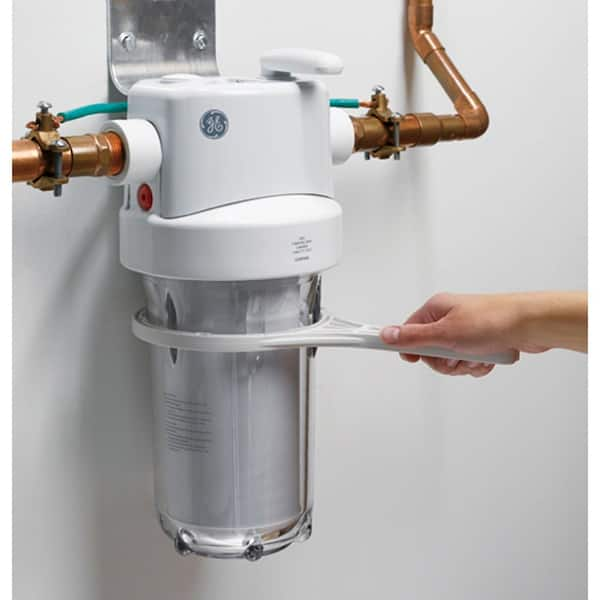Effective Whole-House Water Filtration Systems}
Effective Whole-House Water Filtration Systems}
Blog Article
The publisher is making several good observations on the subject of Choosing Home Water Filters & Other Water Treatment Systems in general in this great article underneath.

Entire residence water filters are the excellent alternative for people that have an interest in having a house that provides tidy, drinkable water. Together with providing top quality drinking water throughout your house, a whole house water filter additionally supplies benefits such as removing contaminations that trigger spotting in water that is used to wash dishes. Unfiltered water can additionally trigger problem such as wearing away plumbing and appliances, wrecking garments that is cleaned as well as stain sinks or showers. Although entire house water filters are generally utilized in residential houses, they can also be a reliable choice for houses or workplaces.
Initially, it may appear that entire home water filters would certainly be extremely pricey when compared to various other filter choices, but they are really a really cost-effective choice for water purification. The price range of these water filters is huge, starting at two hundred bucks and costing as much as one thousand bucks. The price of the filters depends on their dimension, product and life span. This might feel like an extremely high cost, but when compared with various other filter alternatives, it is actually very budget-friendly due to the quantity of filtering that it provides.
Entire house water filters detoxify water in the exact same style that filters, such as countertop or under sink filters, do. The difference is that it requires just one filter, which is affixed to the major water resource, rather than needing several water filters to be affixed to various gadgets. As with the other filters, entire residence water filters detoxify faucet water forcibly it with a number of different phases of filtration. Among the stages is carbon filtration. Carbon is an efficient technique of filtering water due to the fact that it is porous and has the ability to remove small as well as huge impurities. Carbon is necessary in removing unpredictable natural carbon substances, which in many cases can cause severe damages to the liver, kidney or central nervous system. Carbon additionally removes hazardous substances such as pesticides, commercial solvents as well as insecticides.
Another important action of the purification procedure entails a process such as ionization or micron filtration. This action gets rid of numerous contaminants located in faucet water, and transforms the water to excellent tasting, healthy and balanced drinking water. As discussed earlier, the main benefit of entire home water filters are that they provide filtered water throughout the house with using only one filter.
An additional advantage of entire home water filters is the long lifetime that they supply. A lot of these filters last between fifty as well as one hundred thousand gallons of water. For lots of, the main disadvantage of whole residence filters is the more than typical cost. Although these filters are very cost effective, they do require a huge investment in advance. Entire home water filters can likewise call for a substantial quantity job to set up.
How to Remove Iron Bacteria from Well Water
If your drinking water comes from a private well, you will likely experience issues with iron in your water. These issues can range from poor-tasting coffee to bright orange streaks in toilets and bathtubs. However, there’s an equally familiar but less understood problem linked to iron contamination: iron bacteria, also known as “iron-eating” or “iron-oxidizing” bacteria.
Iron is one of the most abundant minerals in the earth’s crust. As a result, elevated levels of iron are usually widespread in the groundwater that serves wells, often fostering the growth of iron bacteria in well water. These organisms can combine oxygen with iron, manganese, or other nutrients in the water to form a swampy sludge containing rust deposits, bacterial cells, and other organic and inorganic matter. This slimy residue then sticks the bacteria to pipes, pumps, plumbing fixtures, and appliances, causing clogging, foul tastes and odors, corroded pipes and plumbing fixtures, etc.
Well-water systems used infrequently or intermittently are typically more prone to iron bacteria problems. To make matters worse, removing these organisms from your water can be complicated, which is why we recommend taking steps to prevent them from forming in your well in the first place. Luckily, this article explains a highly effective way to remove iron bacteria from well water. Let’s start by discussing what iron bacteria are and how they get into well water.
Signs of Iron Bacteria in Water
If your household water supply is contaminated with iron bacteria, you might notice several unappealing signs that may indicate iron bacteria presence. These signs may include:
Stains and deposits on plumbing fixtures, pipes, and appliances
One of the most common indicators of iron bacteria in well water is stains and deposits on plumbing fixtures, pipes, and appliances. Water containing these organisms will leave rust-colored slime stains and deposits in sinks and toilets and inside well casings. You’ll also notice stains on fixtures, tableware, laundry, and various surfaces, that keep coming back no matter your cleaning method or efforts. These stains can be grey, yellow, or brown but are often a reddish-orange rust-like color.
Discoloration
Water containing iron bacteria can have a yellow, red, or orange hue. Further, visible deposits that have a clumpy or slimy consistency are very likely to have been caused by the presence of iron bacteria. Iron bacteria deposits are widespread in toilet tanks. In many cases, the deposits will take the form of a slimy coating along the walls of the tank. If the bacteria have been in the water for a lengthy period, the deposits could float in the water.
Oily sheen on the water surface
A quick and easy way to check for the presence of iron and other slimy-producing bacteria is to look in the water closet tank of your toilet. If you see an oily sheen on the surface of the water and can feel a slimy residue on the inside of the tank, slime-producing bacteria are likely present in your water system. If you use disinfectant in your tank, evidence of these conditions might not be so apparent.
https://www.springwellwater.com/how-to-remove-iron-bacteria-from-well-water/

Do you enjoy more info about What is a Whole House Water Filter and How Does It Work?? Try leaving feedback down the page. We will be delighted to see your insights about this page. We are looking forward that you come back again in the future. So long as you enjoyed reading our blog post if you please be sure to share it. I take joy in reading our article about Whole House Water Filtration.
Click Here Report this page